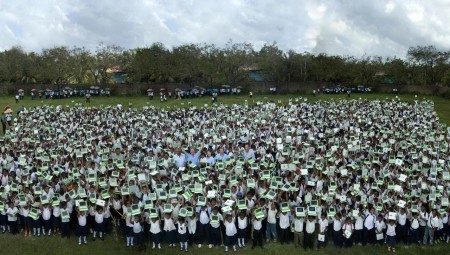Peru has a large and complex XO project, certainly the most varied anywhere, with its mix of rural and urban, powered and off-grid. Now they are adding local assembly of future laptops, something many countries have considered but few have carried out.
As noted recently, local assembly offers shorter startup times for production, and gives the deploying country more of a stake in the ongoing project.
Peru is being supported directly by Quanta, our factory in China, in this. Similar arrangements will be a bit easier now that the first one is underway, but this sort of arrangement is hard to work out unless the deployment team is planning for a steady flow of hardware delivered over years.
Nevertheless, this is a great step for olpc sustainability. Between Peru’s interest in assembly, Uruguay’s recent interest in design for new audiences, and Paraguay’s interest in developing better software and OS builds, Latin American deployments are taking up shared ownership of most aspects of the project.
From their official announcement:
Continue reading



